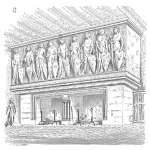
Creating a reliable product that meets customer expectations is risky.
What is risk and how does one go about managing risk? The recent set of ISO standard updates elevates risk management.
A starting place is a definition. [Read more…]
Your Reliability Engineering Professional Development Site
Prep notes for ASQ Certified Reliability Engineer exam ISSN 2165-8633
The CRE Preparation Notes series provides you with short practical tutorials on all the elements that make up the ASQ CRE body of knowledge. The articles provide introductory material, basics, how-tos, examples, and practical use guidance for the full range of reliability engineering concepts, terms, tools, and practices.
Keep your knowledge fresh by regularly reviewing topics and tools that make up reliability engineering.
Sign up for the CRE Preparation Notes email list for the new reliability engineering short tutorials.
- Improve your reliability engineering skills
- Learn about the wide range of tools available
- Enhance your resume with the ASQ CRE
You will find the most recent tutorials in reverse chronological order below.
by Fred Schenkelberg 2 Comments

Creating a reliable product that meets customer expectations is risky.
What is risk and how does one go about managing risk? The recent set of ISO standard updates elevates risk management.
A starting place is a definition. [Read more…]
by Fred Schenkelberg 1 Comment

Chapter 7 Design for Reliability of the book Practical Reliability Engineering starts with:
The reliability of a product is strongly influenced by decisions made during the design process.
The key message here is reliability occurs at the point of decision. Each time someone makes a decision, selects a component, chooses a material, assumes a use profile, the eventual product reliability takes shape.
Design for Reliability, DfR, is about making good decisions across the organization concerning reliability. [Read more…]
by Fred Schenkelberg 2 Comments

There are a few different reasons we explore differences in scale.
Keep in mind that the scale of a dataset is basically the spread of the data. For most datasets, we’re examining the variance.
Hypothesis tests comparing means vary depending on the assumption of equal variances. Thus testing that assumption requires methods to adequately test the homogeneity of variances. The F-test should come to mind as it is a common approach.
Some datasets do not lend themselves to using the F-test, which is applicable using real numbers. Some datasets gather information that is ordinal or interval data, thus we need another approach to test for differences in scale. [Read more…]
by Fred Schenkelberg Leave a Comment

The Hartley test is an extension of the F distribution-based hypothesis test checking if two samples have different variances.
The F test works with two samples allowing us to compare two population variances based on the two samples. This test does not work for three or more populations. We could conduct multiple pairwise comparisons, yet the probability of an erroneous result is significant.
Bartlett’s Test and Levene’s Test are non-parametric checks for homogeneity of variances. Bartlett’s Test pretty much expects the underlying data to be normally distributed.
Levene’s Test is a better choice when you’re not sure the data is normal. Both are conservative and time-consuming to calculate.
We need another way to check for equal variances. [Read more…]
by Fred Schenkelberg 2 Comments

The data analysis course professor tended to focus on the practical application of statistics.
Avoiding statistical theory was fine with me. Learning statistics for me was on how to solve problems, optimize designs, and understanding data.
Then one lecture started with the question, “Why do we sum squares regression analysis, ANOVA calculations, and with other statistical methods?” He paused waiting for one us to answer.
We didn’t. I feared the upcoming lecture would include arcane derivations and burdensome theoretical annotations. It didn’t. [Read more…]
by Fred Schenkelberg 9 Comments

A common assumption when comparing three or more normal population means is they have similar (the same) population variances.
ANOVA and some DOE analysis results rely on the underlying data having similar variances. If this assumption is not true, the conclusions suggested by the ANOVA or DOE may be misleading.
It doesn’t take long to check. [Read more…]
by Fred Schenkelberg Leave a Comment

Here the 2016 survey results as reported by the TypeForm survey tool. [Read more…]
by Fred Schenkelberg Leave a Comment

Confidence intervals (CIs)provide a means to judge point estimates based on a sample from the population.
If that statement excites you, you may well have the makings of a fine statistician.
CIs are a form of internal estimate and specify a range within which a parameter may reside. CIs helps us evaluate the trustworthiness of point estimates. [Read more…]
by Fred Schenkelberg Leave a Comment

Mechanical drawings and electrical schematics communicate the design.
They provide information sufficient to create a product or build a system.
They provide the necessary details that allow others to construct something that originally was only imaged.
We no longer rely on a single craftsman to build a chest of drawers from concept to delivery.
Instead, they may be a team scattered across many organizations relying on the drawings.
Included on the drawings and schematics are dimensions along with tolerances. A keypad will be a specific width, plus/minus some amount. A resistor is nominally 100 ohms, yet anything between 90 and 110 ohms is fine.
Tolerances acknowledge the variability between individual components or caused during the construction process.
Tolerances also impact the reliability performance of your products. [Read more…]
by Fred Schenkelberg Leave a Comment

Technical drawings and electrical specifications often include tolerances.
The range of values allowed for a particular aspect of the part.
Reliability engineers do not set the tolerances, yet we should both understand and influence them.
A critical element of design for reliability is the creation of a robust product.
It is not just robust in the end use, your product should also be robust to the variability that will occur during manufacturing and transportation. [Read more…]
by Fred Schenkelberg 2 Comments

Did you shake a wrapped gift as a child?
Sometimes the rattling sound may indicate the hidden contents. A sweater from Grandma would make a muffled sound, while a new Lego set would rustle the many parts.
Your customers may not shake the package to guess its contents, yet your product will experience vibration and shock.
The environments of assembly, transpiration, use, maintenance, etc all include shock and vibration inputs to your product. The operation of your product may include producing vibration and shock loading across the product.
Understanding the basics of vibration and shock will assist you to design your product to operate as expected in the noisy, shaky world.
The rattling about your product experiences is just one of the many environmental and use factors. [Read more…]
by Fred Schenkelberg 9 Comments

Materials expand or contract with temperature change. Water expands as it freezes, whereas steel contracts as it cools.
This motion can limit the life of your system.
Materials and mechanical engineers include the expected motion into their designs, well the better engineers do.
Even centuries ago, craftsmen used expansion slots or features when attaching wooden table tops to their frames.
The motion due to temperature change will occur and has the potential to create immense strain within your product. [Read more…]
by Fred Schenkelberg 8 Comments

A common reliability test involves ‘baking’ a few units.
Various standards list temperature, duration, and sample size requirements.
When the units survive the test, meaning there are no failures, what does that mean?
How do you interpret a system or component life test using high temperature?
Do the results suggest your product is reliable? Maybe it is maybe it isn’t.
Let’s examine one way to design and interpret high-temperature testing. [Read more…]
by Fred Schenkelberg 2 Comments

Benchmarking is the systematic process of observation and analysis.
The evaluation of a project, method or process best practices as performed by recognized industry leader may reveal improvement opportunities for your organization.
Benchmarking may focus on diverse business processes and with both internal and external subjects.
The intent is to understand what makes the subject’s process work well.
Understanding a system that operates well may reveal the elements in your process that may benefit with a change.
Keep in mind that not all best practice processes may apply to your specific situation. (Lapide, 2005) [Read more…]
by Fred Schenkelberg Leave a Comment

Initially, the CRE Prep blog aimed at providing refresher material for those preparing for the ASQ CRE exam.
In discussions with readers, it has become clear to me that many new to reliability engineering have found the series of articles useful.
That is should not be surprising since many of the tutorials are introductory and practical.
The problem those new to the field have is related with where to start.
There is a lot of information related to reliability engineering.
From defining reliability to working with teams to Weibull analysis, there is a lot to know. [Read more…]